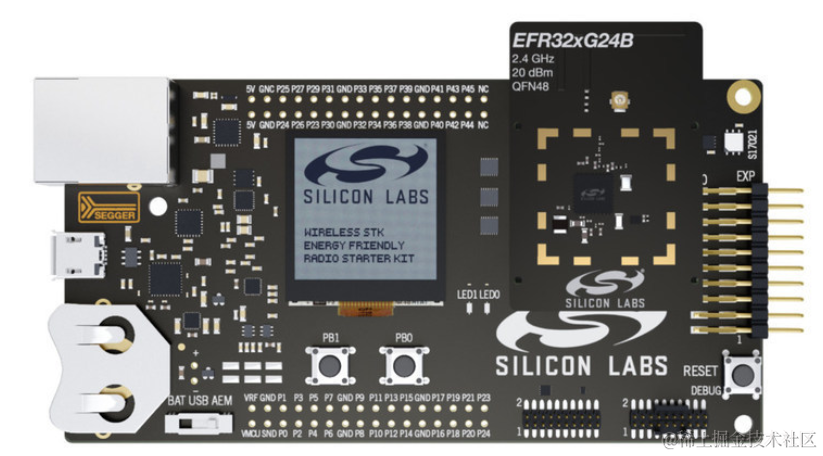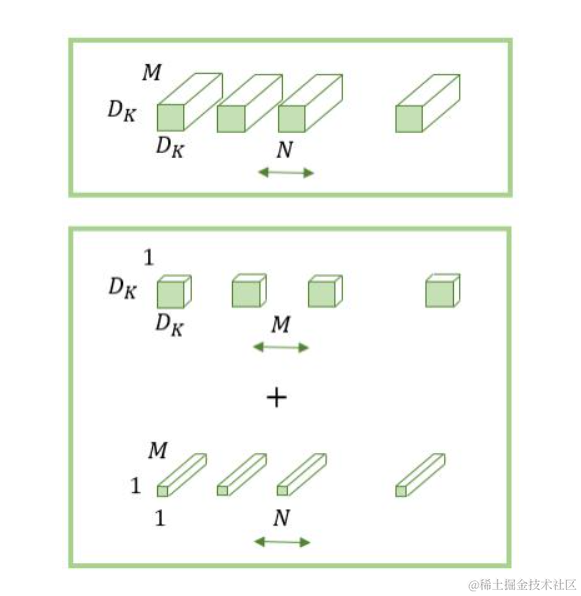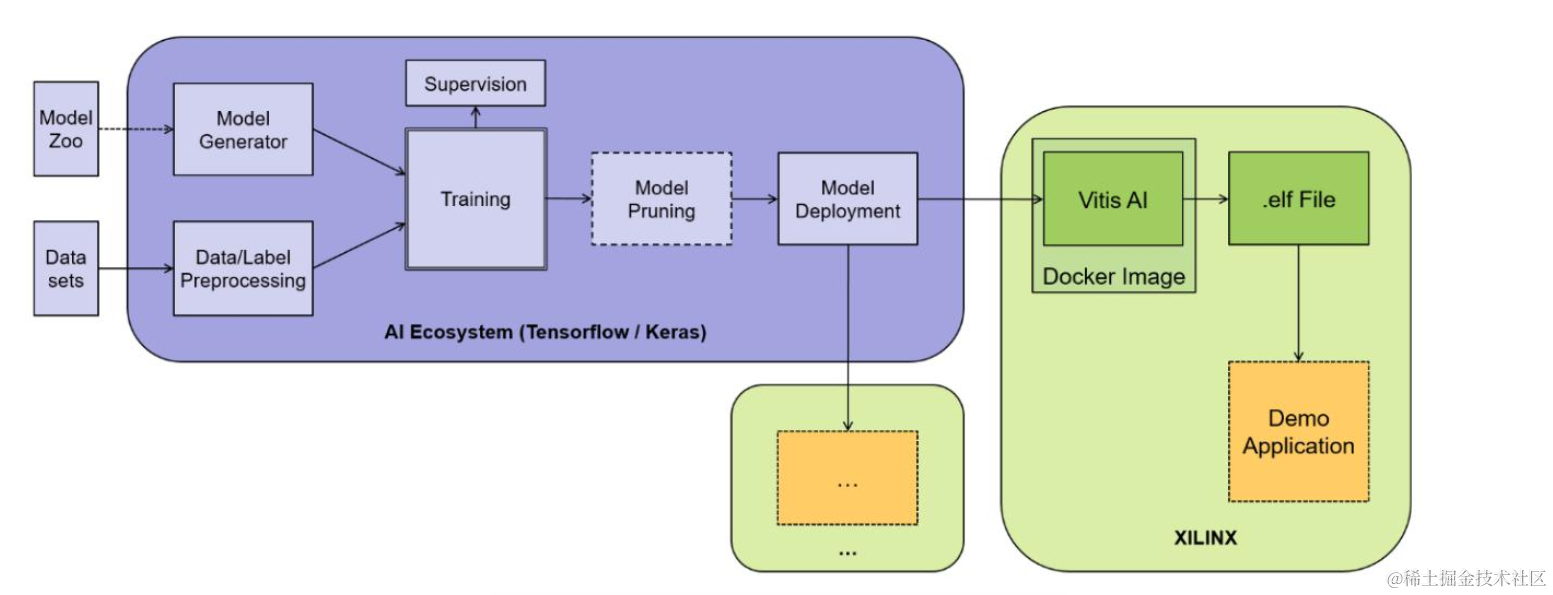嵌入式人工智能:神经网络在边缘设备上的应用
引言
嵌入式系统已经成为我们生活中不可或缺的一部分,从智能手机到家用电器,几乎每个设备都搭载了嵌入式技术。随着人工智能的快速发展,将神经网络应用于嵌入式设备上变得越来越普遍。本文将深入探讨嵌入式人工智能的现状,以及神经网络在边缘设备上的应用。
神经网络与嵌入式系统
神经网络是一种模拟人脑的计算模型,广泛用于图像识别、自然语言处理、声音识别等领域。传统上,这些任务需要大量的计算资源,通常由云服务器来完成。但是,随着嵌入式系统性能的不断提升,将神经网络部署在边缘设备上变得可能。
神经网络模型
神经网络模型是嵌入式人工智能的核心。常见的神经网络包括卷积神经网络(CNN)用于图像处理,循环神经网络(RNN)用于序列数据,以及深度神经网络(DNN)用于各种任务。这些模型通过训练从数据中学习特征,并可以用于在边缘设备上进行推理和决策。
硬件要求
在边缘设备上运行神经网络需要满足一定的硬件要求。通常,这些要求包括高性能的中央处理单元(CPU)或图形处理单元(GPU),足够的内存和存储空间,以及能耗较低的设计。一些专门设计的硬件加速器,如 Google 的 Tensor Processing Unit(TPU)和 NVIDIA 的 Jetson 系列,可以进一步提高神经网络的性能。
神经网络在嵌入式系统中的应用
神经网络在嵌入式系统中的应用广泛,包括但不限于以下领域:
1. 图像识别
神经网络在边缘设备上用于图像识别,如智能摄像头、自动驾驶汽车和无人机。这些设备可以通过检测对象、人脸识别等功能提供更智能的应用。
import tensorflow as tf# 加载训练好的图像识别模型model = tf.keras.models.load_model('image_recognition_model.h5')# 拍摄照片image = capture_image()# 对图像进行预处理image = preprocess_image(image)# 使用模型进行识别predictions = model.predict(image)# 输出识别结果print(predictions)
复制代码
2. 自然语言处理
嵌入式设备可以通过神经网络实现自然语言处理任务,如语音助手、实时翻译和智能对话。这些应用需要处理大量的文本和语音数据。
import tensorflow as tf# 加载训练好的语音识别模型model = tf.keras.models.load_model('speech_recognition_model.h5')# 获取麦克风输入audio = record_audio()# 对音频进行特征提取features = extract_features(audio)# 使用模型进行语音识别transcription = model.predict(features)# 输出识别结果print(transcription)
复制代码
3. 视觉感知
边缘设备还可以通过神经网络实现视觉感知任务,如人体姿态估计、手势识别和虚拟现实。这些应用可以提供更丰富的用户体验。
import tensorflow as tf# 加载训练好的姿态估计模型model = tf.keras.models.load_model('pose_estimation_model.h5')# 获取摄像头图像frame = capture_frame()# 使用模型进行姿态估计pose = model.predict(frame)# 可视化姿态结果visualize_pose(pose)
复制代码
当在嵌入式系统上使用神经网络时,通常需要使用深度学习框架,如 TensorFlow Lite、TensorFlow Micro 或 MicroTVM 等,以便在资源受限的环境中有效地运行神经网络模型。以下是一些简单的代码案例,演示了如何在嵌入式系统上使用 TensorFlow Lite 来运行神经网络模型。
4. TensorFlow Lite 图像分类
在嵌入式系统上使用 TensorFlow Lite 进行图像分类。需要先准备一个 TensorFlow Lite 模型(.tflite文件),该模型用于图像分类任务。
import numpy as npimport tflite_runtime.interpreter as tflite# 加载TensorFlow Lite模型interpreter = tflite.Interpreter(model_path="image_classification_model.tflite")interpreter.allocate_tensors()# 获取输入和输出张量input_details = interpreter.get_input_details()output_details = interpreter.get_output_details()# 加载图像并进行预处理image = load_and_preprocess_image("input_image.jpg")# 将图像数据设置为输入张量interpreter.set_tensor(input_details[0]['index'], image)# 运行推理interpreter.invoke()# 获取输出结果output_data = interpreter.get_tensor(output_details[0]['index'])# 解析结果top_k = np.argsort(output_data[0])[::-1][:5] # 获取前五个类别for i, idx in enumerate(top_k): class_name = get_class_name(idx) # 获取类别名称 score = output_data[0][idx] # 获取类别得分 print(f"Class {i+1}: {class_name}, Score: {score}")
复制代码
5. TensorFlow Lite 语音识别示例
以下示例演示了如何在嵌入式系统上使用 TensorFlow Lite 进行语音识别。需要一个 TensorFlow Lite 模型,该模型用于识别语音。
import numpy as npimport tflite_runtime.interpreter as tflite# 加载TensorFlow Lite模型interpreter = tflite.Interpreter(model_path="speech_recognition_model.tflite")interpreter.allocate_tensors()# 获取输入和输出张量input_details = interpreter.get_input_details()output_details = interpreter.get_output_details()# 采集音频并提取特征audio_data = record_audio()features = extract_features(audio_data)# 将音频特征设置为输入张量interpreter.set_tensor(input_details[0]['index'], features)# 运行推理interpreter.invoke()# 获取输出结果transcription = interpreter.get_tensor(output_details[0]['index'])print("Transcription: ", transcription)
复制代码
这些示例代码演示了如何在嵌入式系统上使用 TensorFlow Lite 来运行图像分类和语音识别任务。确保将模型文件(.tflite)替换为适用于的应用程序的实际模型文件。此外,还需要合适的预处理和后处理步骤,以根据模型的需求准备输入数据并解释输出结果。
6. TensorFlow Lite 视觉感知示例
以下示例演示了如何在嵌入式系统上使用 TensorFlow Lite 进行视觉感知任务,例如人体姿态估计。需要一个适用于该任务的 TensorFlow Lite 模型。
import numpy as npimport tflite_runtime.interpreter as tflite# 加载TensorFlow Lite模型interpreter = tflite.Interpreter(model_path="pose_estimation_model.tflite")interpreter.allocate_tensors()# 获取输入和输出张量input_details = interpreter.get_input_details()output_details = interpreter.get_output_details()# 获取摄像头帧图像frame = capture_frame()# 预处理图像(根据模型需求进行预处理)processed_frame = preprocess_frame(frame)# 将预处理后的图像设置为输入张量interpreter.set_tensor(input_details[0]['index'], processed_frame)# 运行推理interpreter.invoke()# 获取输出结果pose_data = interpreter.get_tensor(output_details[0]['index'])# 解析姿态估计结果parsed_pose = parse_pose(pose_data)# 可视化姿态结果visualize_pose(parsed_pose)
复制代码
这个示例演示了如何在嵌入式系统上使用 TensorFlow Lite 来运行视觉感知任务,例如人体姿态估计。确保将模型文件、摄像头输入和其他数据预处理步骤适配到具体任务。
7. TensorFlow Micro 示例
如果嵌入式设备资源非常有限,还可以使用 TensorFlow Micro,这是一个专门为微控制器和嵌入式系统设计的版本。以下是一个简单的示例,在嵌入式系统上使用 TensorFlow Micro 运行神经网络。
#include "tensorflow/lite/micro/micro_interpreter.h"#include "tensorflow/lite/micro/all_ops_resolver.h"#include "tensorflow/lite/micro/kernels/micro_ops.h"#include "tensorflow/lite/micro/micro_error_reporter.h"#include "tensorflow/lite/schema/schema_generated.h"#include "tensorflow/lite/version.h"// 加载神经网络模型extern const unsigned char model_data[];extern const int model_data_size;// 创建TensorFlow Lite Micro解释器tflite::ErrorReporter* error_reporter = nullptr;tflite::OpResolver* op_resolver = nullptr;tflite::MicroInterpreter* interpreter = nullptr;// 准备输入数据TfLiteTensor* input = interpreter->input(0);// 设置输入数据// ...// 运行推理TfLiteStatus invoke_status = interpreter->Invoke();// 获取输出数据TfLiteTensor* output = interpreter->output(0);// 解析和处理输出数据// ...
复制代码
在嵌入式系统上使用 TensorFlow Micro 来加载神经网络模型、准备输入数据、运行推理并处理输出数据。请注意,TensorFlow Micro 需要特定的硬件支持,因此需要根据的设备和需求进行相应的配置和编译
8. 使用 MicroTVM 部署神经网络
MicroTVM 是一个用于在嵌入式设备上部署深度学习模型的开源工具。以下示例演示了如何使用 MicroTVM 部署神经网络模型到目标嵌入式设备上。
首先,需要安装 MicroTVM 并配置适当的硬件目标。然后,可以使用 MicroTVM 的 Python API 来加载、编译和部署模型。
import tvmfrom tvm import relayfrom tvm.contrib import utilsimport tensorflow as tfimport tensorflow_hub as hub# 加载TensorFlow模型model = tf.keras.Sequential([ hub.KerasLayer("https://tfhub.dev/google/tf2-preview/mobilenet_v2/classification/4")])# 转换TensorFlow模型为TVM Relay格式with tvm.relay.build_config(opt_level=3): mod, params = relay.frontend.from_keras(model, shape={"input_1": (1, 224, 224, 3)})# 编译模型为目标特定的运行时target = "llvm -device=arm_cpu -mtriple=aarch64-linux-gnu"with tvm.transform.PassContext(opt_level=3): lib = relay.build(mod, target=target, params=params)# 将编译后的模型保存到文件lib.export_library("deployed_model.so")
复制代码
将 TensorFlow 模型加载到 TVM Relay 中,然后使用 TVM 编译为目标特定的运行时库。接下来,可以将生成的库文件(deployed_model.so)部署到嵌入式设备上,并使用 TVM 运行推理任务。
9. Edge TPU 示例
Google 的 Edge TPU 是一种专门设计用于加速深度学习推理的硬件加速器。以下示例演示了如何在嵌入式系统上使用 Edge TPU 加速神经网络推理。
import tflite_runtime.interpreter as tflitefrom edgetpu.basic.basic_engine import BasicEngine# 加载TensorFlow Lite模型interpreter = tflite.Interpreter(model_path="edge_tpu_model.tflite")interpreter.allocate_tensors()# 获取输入和输出张量input_details = interpreter.get_input_details()output_details = interpreter.get_output_details()# 加载Edge TPU模型engine = BasicEngine("edge_tpu_model_edgetpu.tflite")# 获取Edge TPU的输入和输出张量input_tensor, output_tensor = engine.get_input_output_details()# 获取摄像头图像frame = capture_frame()# 预处理图像(根据模型需求进行预处理)processed_frame = preprocess_frame(frame)# 将预处理后的图像设置为输入张量interpreter.set_tensor(input_details[0]['index'], processed_frame)# 使用Edge TPU运行推理engine.run_inference(processed_frame)# 获取Edge TPU的输出结果output_data = output_tensor()# 解析结果# ...
复制代码
在嵌入式系统上使用 Edge TPU 硬件加速器来加速神经网络推理。确保模型已经经过 Edge TPU 的编译,并且在运行时正确加载了硬件加速器。















评论